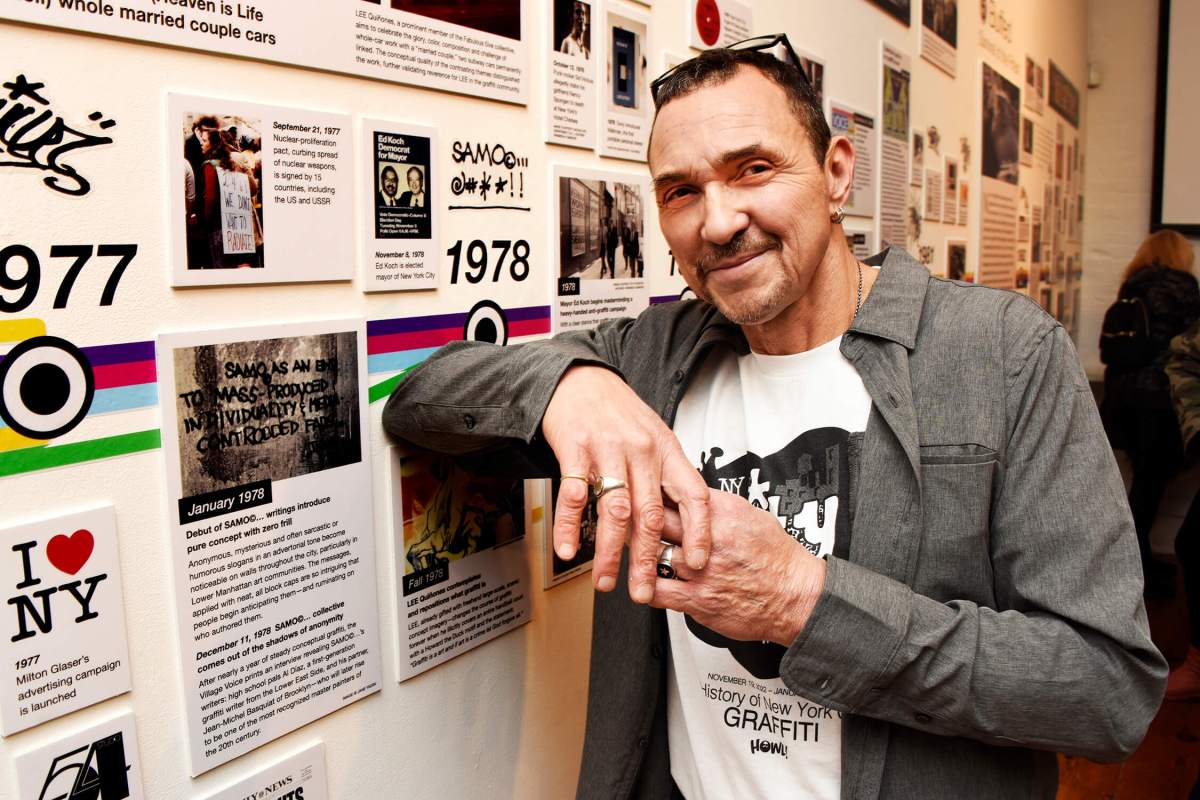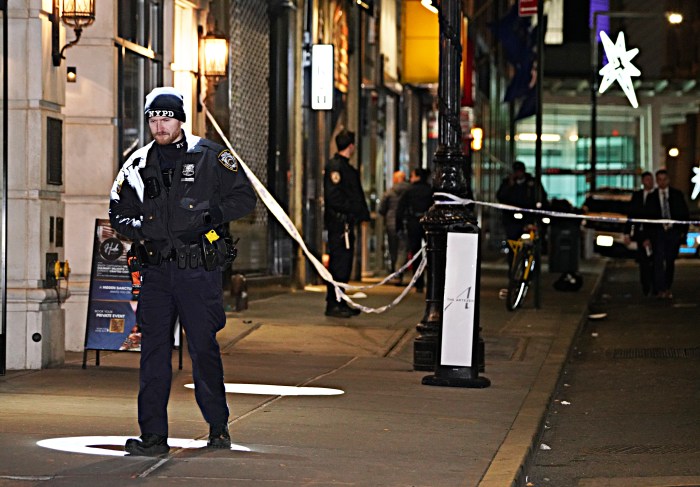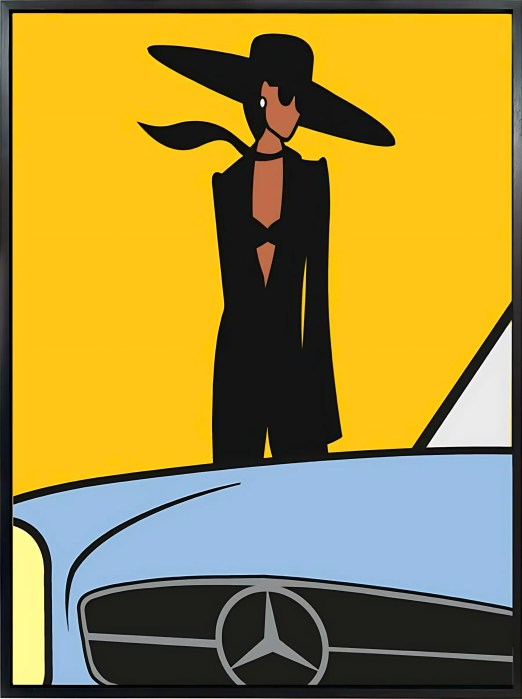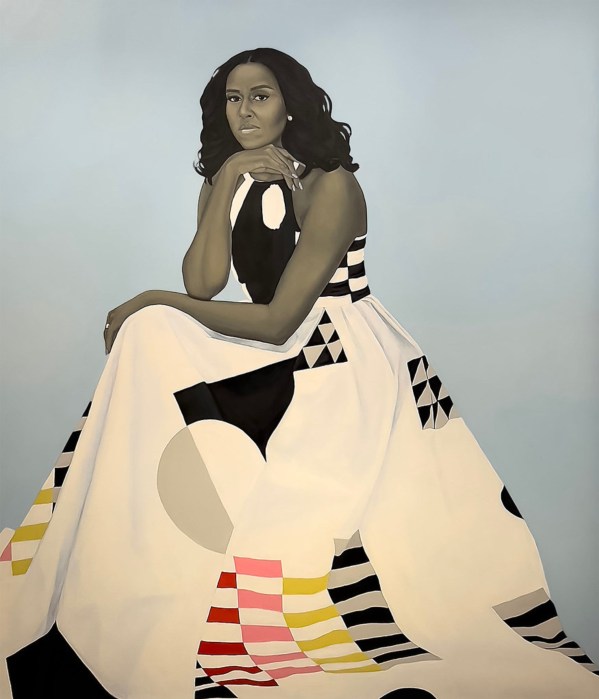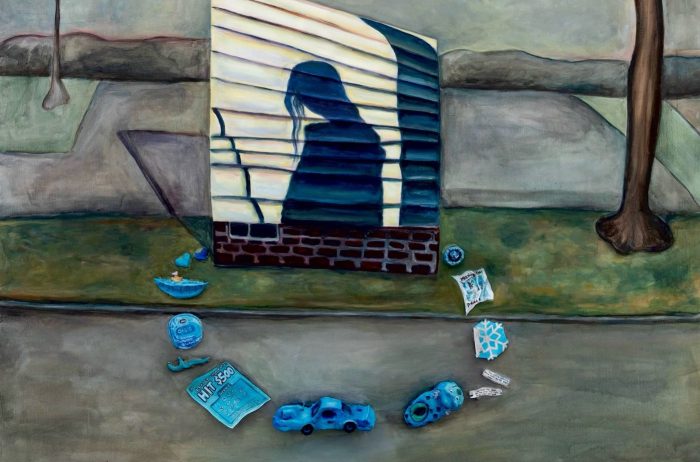It looked like a there was a gathering of rock stars inside the Howl! Happening gallery on on a frigid Saturday night with a line of fans stretching out from the door, down First Street and up the Bowery. Inside, autograph seekers were gathering signatures on photos, t-shirts, scrapbooks and, in one case, a wooden box containing a spray paint can.
The occasion was the opening of “City of Kings: A History of Graffiti in New York,” an information filled exhibit curated and researched by graffiti artist Al Diaz, art educator Mariah Fox and graffiti artist/archivist Eric ‘DEAL CIA’ Felisbret.
Conceived as a timeline that traces the evolution of the practice from 1969 to the present, the exhibit drew a crowd that was filled with many of the artists represented and fans who had been around since back in the day as well as younger folks who had a sometimes surprisingly good grasp on the significance of the culture.
Diaz began his tagging career as BOMB-1 and went on to partner with Jean-Michel Basquiat to create SAMO©, which was a turning point for the art.
“In the beginning, the motivation was to get your name out,” he explains. “It was initially a conversation with other graffiti artists. SAMO© changed that game — it wasn’t a tag, it was totally conceptual.”
In creating this exhibit, Diaz and crew wanted to “refine people’s understanding of what this culture is.” Besides giving the pioneers their due, he explains that there are a few misconceptions that he wanted to clear up.
“I want people to learn that street art — the murals, etc. — didn’t just start out of thin air. And that graffiti is not just related to hip-hop — a lot of the taggers were not part of that culture.”
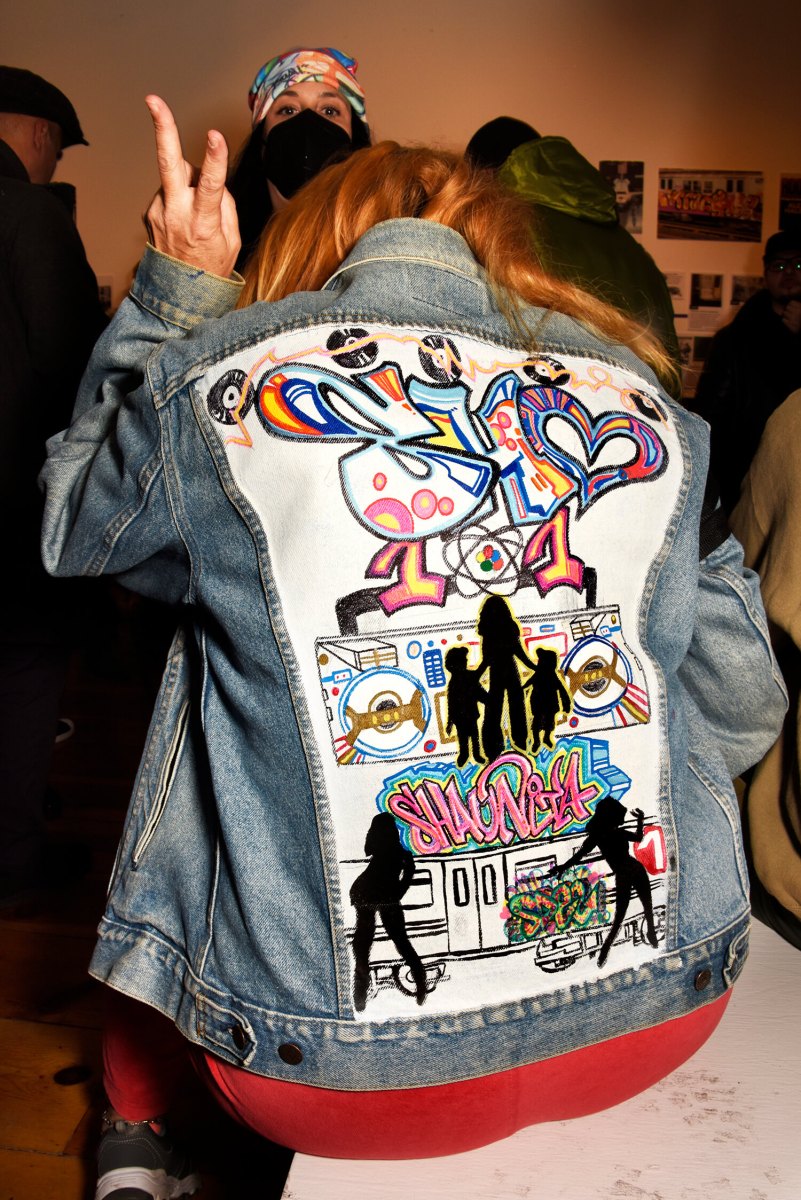
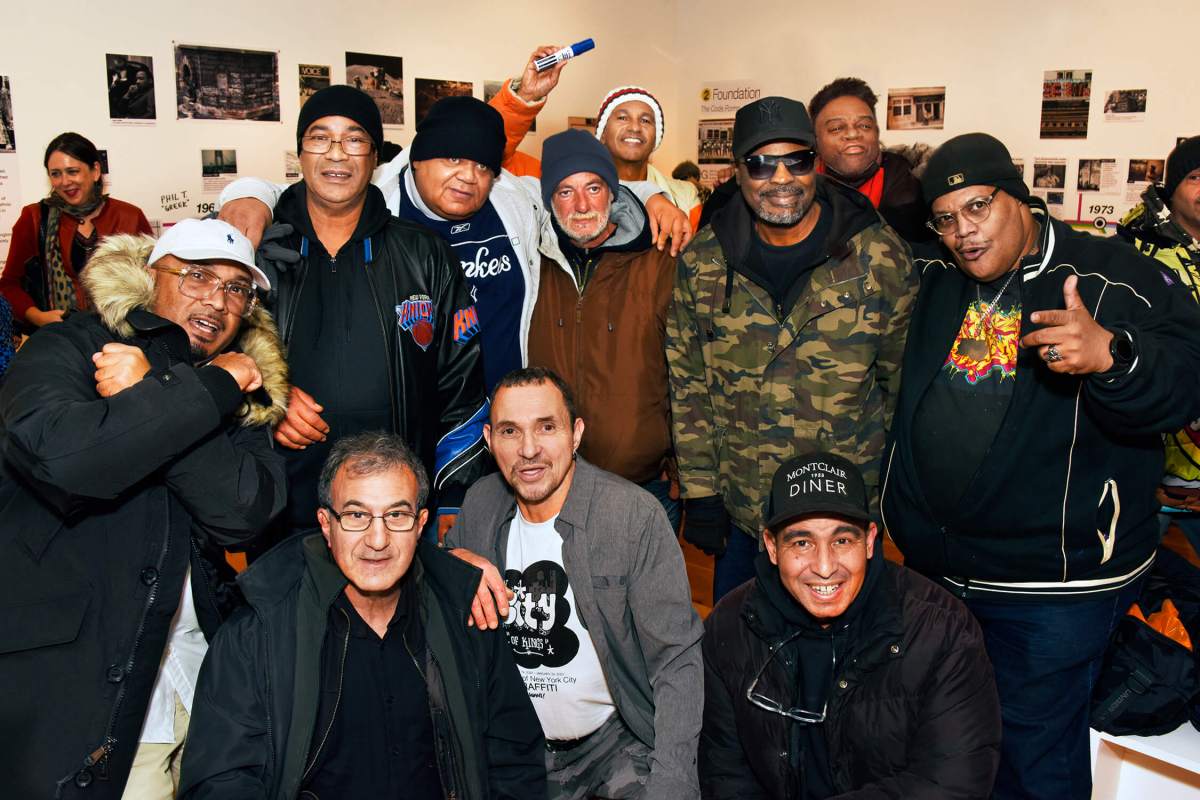
Bottom L-R: FLINT, Al Diaz ( BOMB 1 , 1/2 of SAMO © ), Eric Felisbret ( DEAL CIA )Photo by Bob Krasner
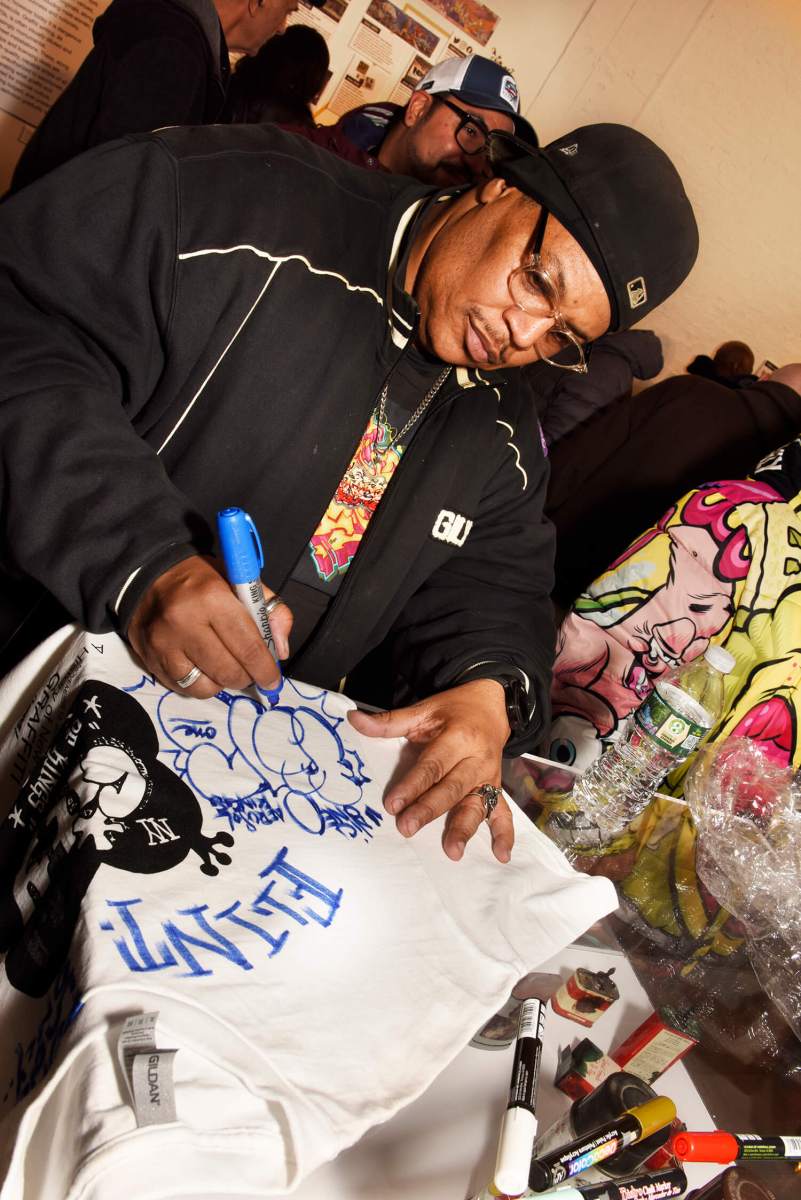
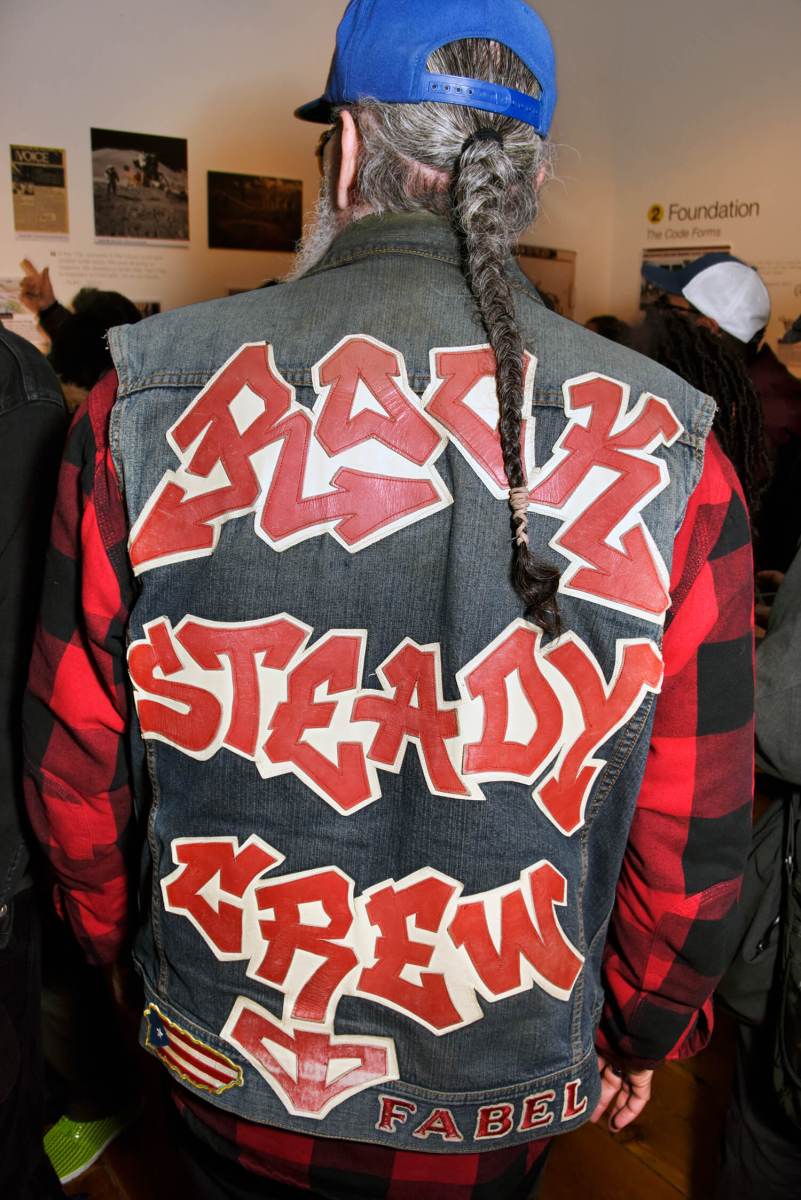
The artists on hand frequently used the same word to describe how it felt to be there on opening night: awesome.
William Green, aka NIC-1, repeated that sentiment and noted that “any show that we have to show the culture is a win.”
FLINT, who started tagging around Prospect Park in 1966 at the age of 9, marveled that “it’s hard to believe that some of us are still alive.”
In between tagging items for fans, he explained that it started for him as a sickly kid who learned about a phrase that was found all over walls in the 1940s: “Kilroy Was Here.”
“That’s what gave me the idea,” he recalled, adding, “it was my secret identity.”
Noted downtown music photographer Bob Gruen was impressed with the show as well.
“It is a very well thought out and researched history, comparing the early events in graffiti art in New York City with the current cultural and social events of the time. Very informative!” he told us.
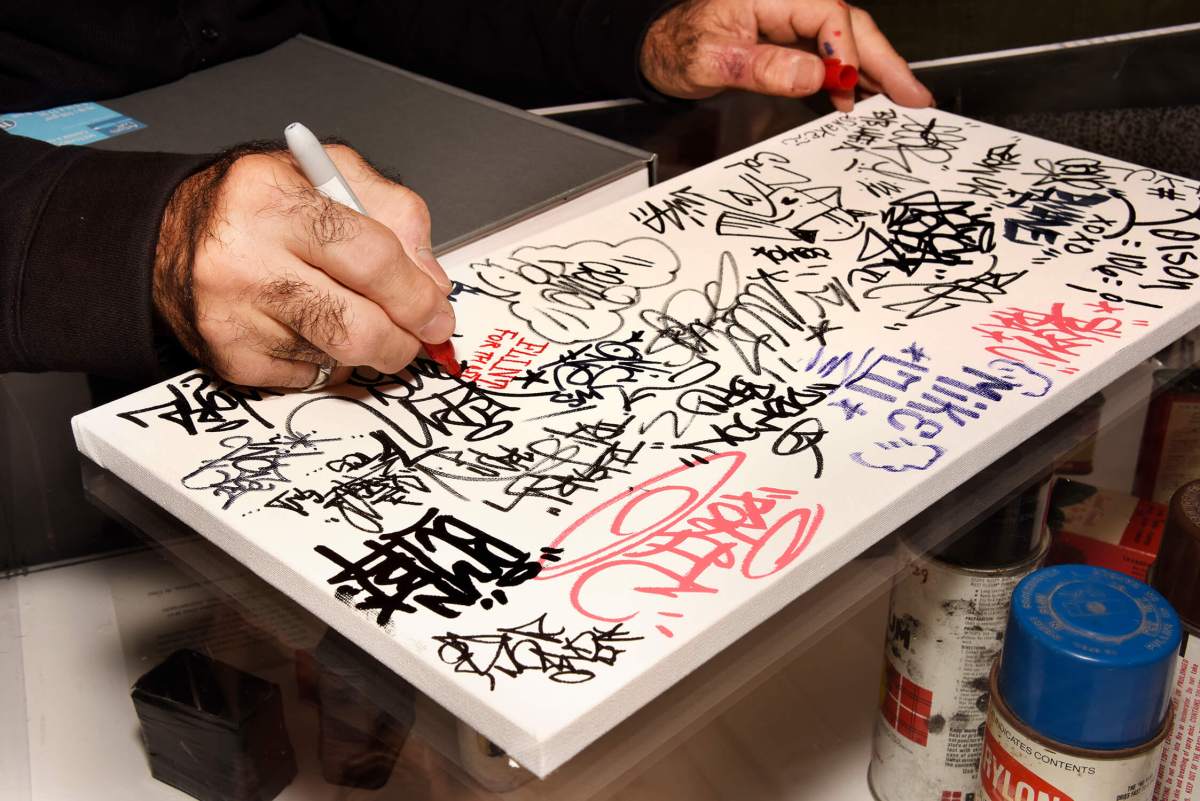
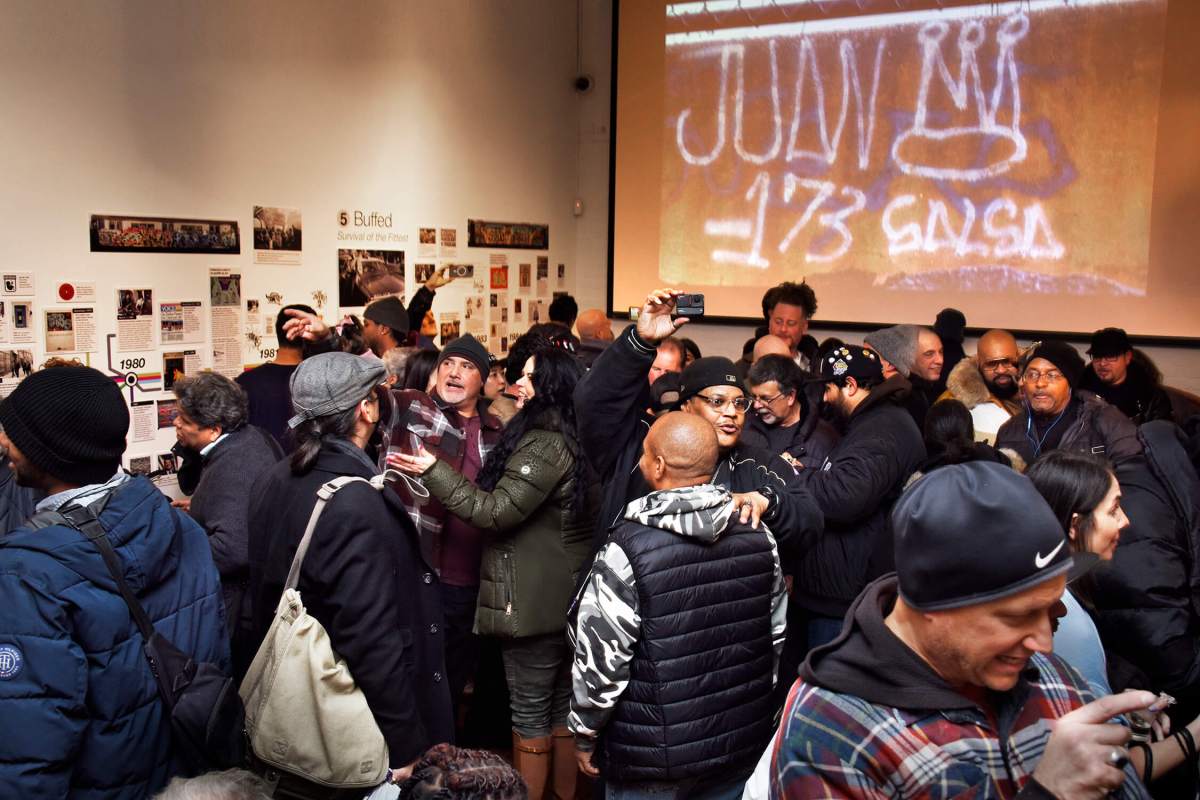
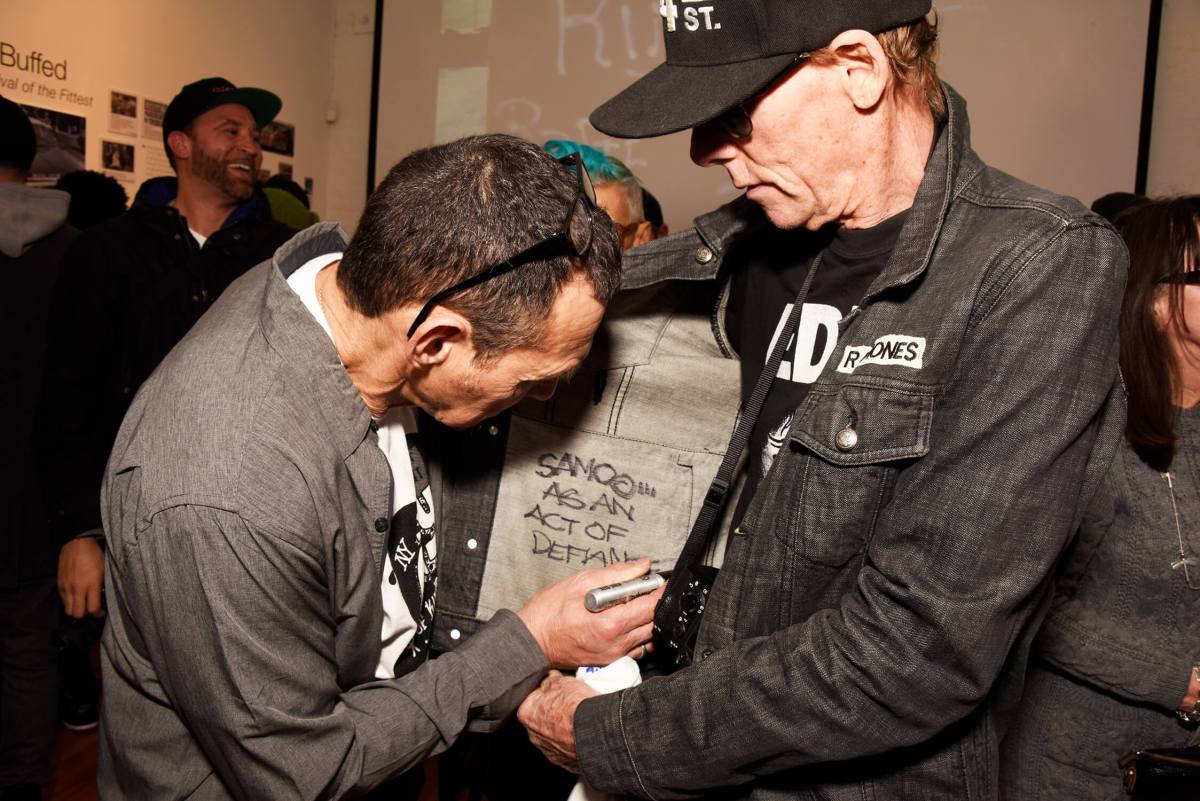
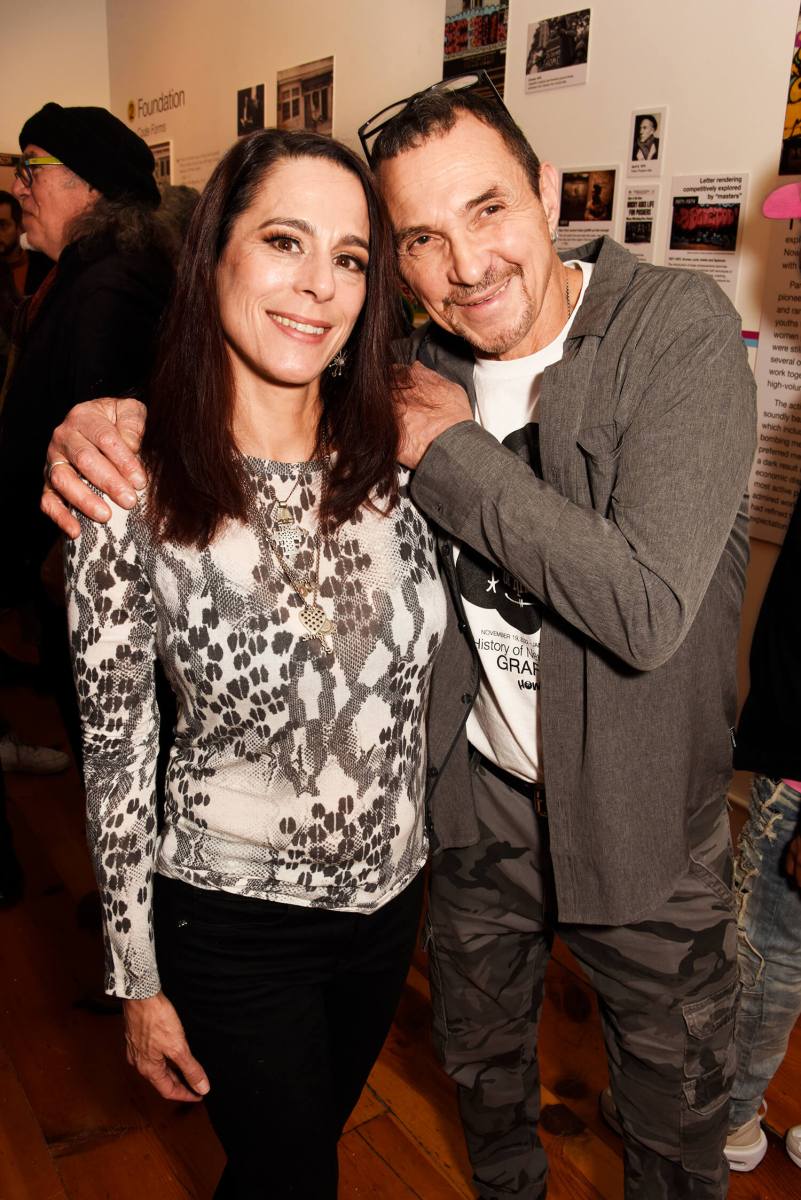
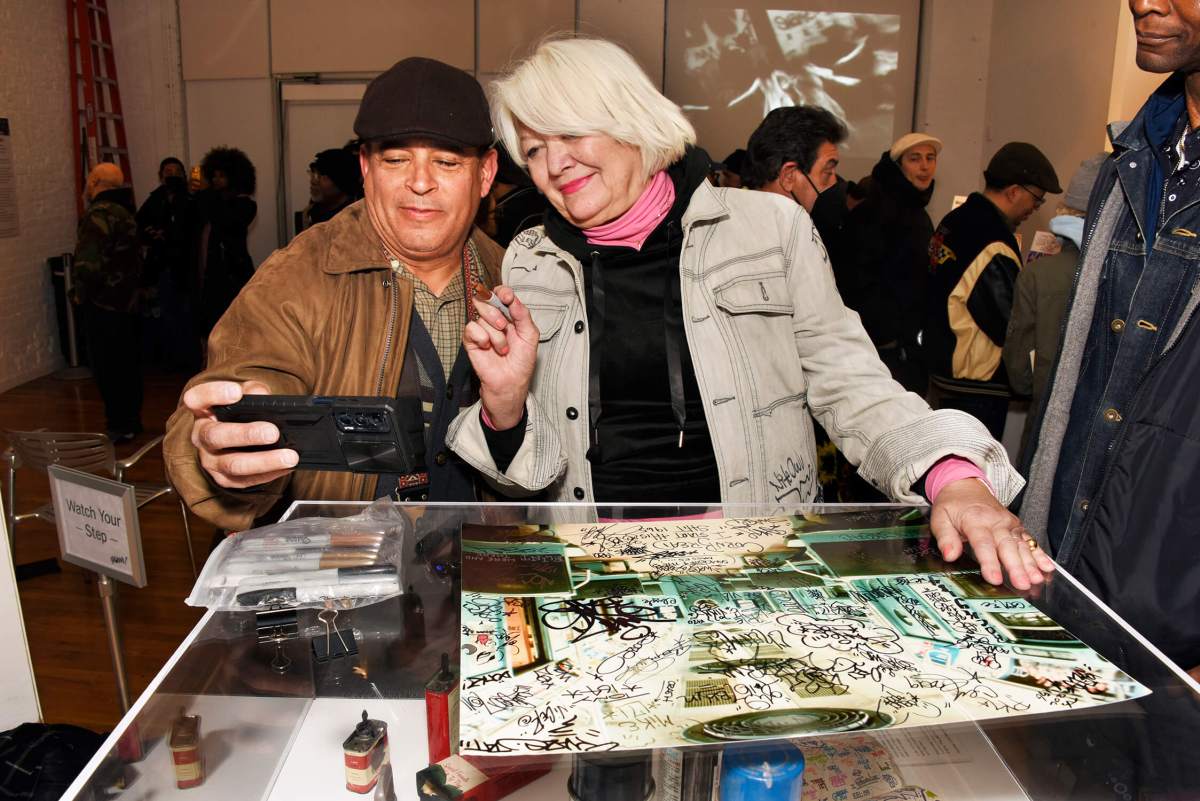
Lily Forbes, a 19 year-old artist, said, “This exhibition is important! It’s an art form that’s less formalized than art in frames and its transgressive nature has caused it to be invalidated. But it’s the intersection of social movement, politics and art.”
Diaz describes the process of putting together the show as a labor of love that involved lots of interviews, research and the “encyclopedic knowledge” of Eric Felisbret.
“It was three months of three people doing the work of ten and we didn’t get paid for it,” he says. “We just had faith that something else would come out of it.”
Putting it all together, Diaz said, meant dealing with “so many egos and a few loose cannons. It’s a pretty crazy bunch and everybody has their own version of history.”
Scott Orr, who writes about street art for UP Magazine and publishes B Scene Zine, opined that “An exhibition like this is long overdue. Street art is the art movement of our time, like impressionism in the 19th century or pop art in the 20th, so it’s important to remember that the whole thing started in NYC with a few kids with stolen cans of spray paint. It wasn’t like today: there was no money, no galleries, no museums, no rich collectors; it was a pure art form.”
A companion show featuring documentation of the art form will open at the 250 Bowery Howl! location on Dec. 3. Information about both shows is available at howlarts.org/event/city-of-kings-a-history-of-new-york-city-graffiti.
Editor’s note: Graffiti, when painted without permission onto public or private property, is still a crime punishable by fines and/or imprisonment. Report illegal graffiti to 311.
Read more: Top 10 Broadway Shows of 2023



